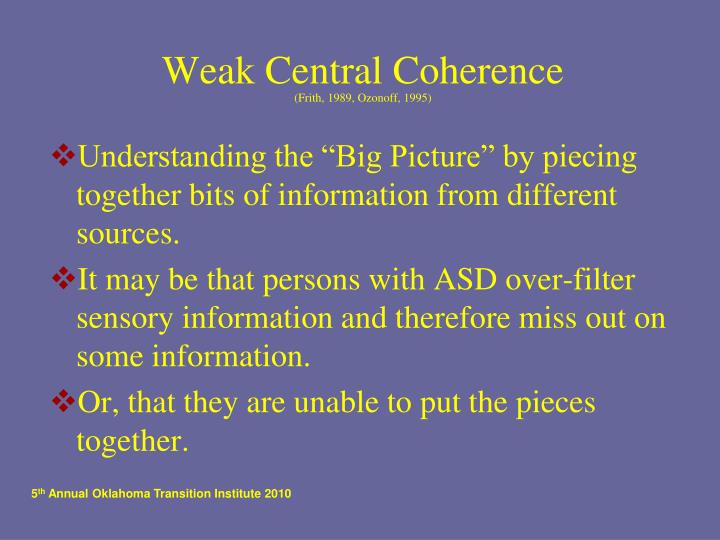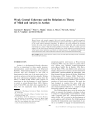
Keywords: autism spectrum disorder (ASD) global information processing (GIP) inclusive classrooms interpretive case study qualitative study teacher-ASD learner verbal instructions weak central coherence (WCC).Īttwood (2007) states that learners with autism spectrum disorder (ASD) only start to feel different when they are in a more formal school environment and extra pressure is put on them to achieve. This study was limited to three learners with ASD, and more studies are required to confirm the results. Learners understood the immediate or literal meaning of the verbal instructions, but were persistently pre-occupied with only one part of their teachers' instructions and persevered with smaller details. These tendencies often led to social isolationĬONCLUSION: This study highlights a deeper level of misunderstanding during teacher-ASD learner verbal interactions during task instructions. This obsessive behaviour was manifested in their inability to appreciate the global perspective of a situation. RESULTS: The learners with ASD struggled to comprehend the general classroom discussions and fixated on minute details. METHODS: An interpretive qualitative case study design was chosen with non-participant observations and individual semi-structured interviews. The learners' schools, one government inclusive mainstream and one private school, were located in the Western Cape, South Africa. The learners had been clinically diagnosed with ASD by an independent clinical educational psychologist. SETTING: Three Grade 3, 9-year-old learners and their teachers were purposively sampled. Weak central coherence and GIP behaviours manifest in classrooms when learners with ASD focus narrowly on minute detail whilst ignoring teachers' instructions.ĪIM: The aim of the study was to describe three case studies of teacher-ASD learner verbal interactions during task instructions in inclusive classrooms. IILiteracy Development, Faculty of Education, Cape Peninsula University of Technology, Cape Town, South AfricaīACKGROUND: Whilst it is known that weak central coherence (WCC) and global information processing (GIP) challenges contribute to teacher-learner task instruction challenges in learners with autism spectrum disorder (ASD), there are limited data on how teachers in inclusive classrooms respond. IDepartment of Education, Faculty of Education, Cape Peninsula University of Technology, Cape Town, South Africa Implications for CC theory are discussed.Weak central coherence is a syndrome of autism spectrum disorder during teacher-learner task instructions


Few associations were found between cognitive variables and indices of autistic symptomatology. Furthermore, weak CC was unrelated to false-belief understanding, but aspects of coherence (related to integration) were associated with aspects of executive control.

This cognitive profile was generally similar for younger and older children with ASD.

Evidence of local processing on coherence tasks was widespread in the ASD group, but difficulties in attributing false beliefs and in components of executive functioning were present in fewer of the children with ASD. Significant group differences were found in all three cognitive domains. Children with an autism spectrum disorder (ASD) and matched typically developing children were administered tasks tapping visuospatial coherence, false-belief understanding and aspects of executive control. This study examined the validity of "weak" central coherence (CC) in the context of multiple cognitive capabilities/deficits in autism.


 0 kommentar(er)
0 kommentar(er)
